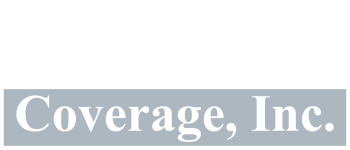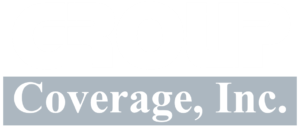Large Group Health Insurance & Employee Benefits
What is considered a large group and how is it rated?
According to Healthcare.gov, the Definition of a Large Group Health Plan is as follows:
In general, a group health plan that covers employees of an employer that has 101 or more employees. Until 2016, in some states large groups are defined as 51 or more.
By most carrier standards, a large group would be an account with 51 or more eligible employees. However, this term can be very subjective. A company with 51 eligible employees, but only a handful participating, would still be considered a large group by most state insurance departments. However, the broker and the group administrator may not agree. This is primarily because large groups are generally subject to medical underwriting, experience rating or having the rates based on the demographics - i.e., basing the rates on the average age, dependent status, zip code and gender make-up. Many times, this rating process includes the employees not even participating on the plan.
There are various thresholds and requirements that pertain to large groups. For instance, most carriers require a participation percentage of usually 75% of net eligible employees to enroll to be considered for the marketing and the renewal of the account. The term ‘net’ factors the number of employees available after deducting those covered by their spouses and sometimes by Medicare or Medicaid.
When is an account experience rated?
Typically, accounts are experience rated when over 100 employees are enrolled, however negotiated discounts are often contemplated on accounts with less than 100 enrolled if they run well with respect to claims. That is maintain a low medical loss ratio (MLR). Conversely, if an account is running poorly, renewal premiums often increase above industry trending rates. All this is subject to change with health care reform.
Loss information is usually only available on groups with over 100 enrolled. So how does a broker/agent effectively market an account when loss data is unavailable if the group has less than 100 lives enrolled but is still considered a large? All we can say is that there are other tools available.
Large Group Health Insurance Changes Under Health Care Reform
“To ensure premium dollars are spent primarily on health care, the new law generally requires that at least 85% of all premium dollars collected by insurance companies for large employer plans are spent on health care services and health care quality improvement. For plans sold to individuals and small employers, at least 80% of the premium must be spent on benefits and quality improvement. If insurance companies do not meet these goals because their administrative costs or profits are too high, they must provide rebates to consumers.” Source: Healthcare.gov
Self-Funded Non-Federal Governmental Plans
The Affordable Care Act has given Americans new rights and benefits, by helping more children get health coverage, ending lifetime and most annual limits on care, allowing young adults under 26 to stay on their parent’s health insurance, and giving patients access to recommended preventive services without cost.
Prior to enactment of the Affordable Care Act, sponsors of self-funded, non-federal governmental plans were permitted to elect to exempt those plans from, or “opt out of,” certain provisions of the Public Health Service (PHS) Act. This election was authorized under section 2721(b)(2) of the PHS Act.
The Affordable Care Act made several changes, with the result that sponsors of self-funded, non-federal governmental plans can no longer opt out of as many requirements of Title XXVII.
This section is intended to provide information about this opt out provision. The information in this section will be of interest to state and local governmental employers that provide self-funded group health plan coverage to their employees, administrators of those group health plan, and employees and dependents who are enrolled, or may enroll, in those plans.
Although self-funded nonfederal governmental plans may still opt out of certain provisions of the PHS Act, they are not exempt from other requirements of the law including the restrictions on annual limits and other provisions of the Patient’s Bill of Rights. Source: cms.gov
For more information, go to: http://cciio.cms.gov/programs/marketreforms/nonfedgovplans/index.html
Ending Surprise Medical Bills
Starting January 1, 2022, consumers have new billing protections when getting emergency care, non-emergency care from out-of-network providers at in-network facilities, and air ambulance services from out-of-network providers. Through new rules aimed to protect consumers, excessive out-of-pocket costs are restricted, and emergency services must continue to be covered without any prior authorization, and regardless of whether or not a provider or facility is in-network. See how new rules help protect people from surprise medical bills and remove consumers from payment disputes between a provider or health care facility and their health plan, visit: cms.gov/nosurprises.
What is needed to quote a large group benefit plan?
- Benefit summaries for current plan designs
- Employee census
- Copy of current carrier bill
- Contribution amounts for each class Waiting period, hours eligible, locations, nature of business
- Class carve-outs, Medicare/Medicaid, COBRA, unions, and retirees.
Large Group Medical Insurance New Business Submission Guide
Groups 51 - 99 - Provide the following:
Check with the State Insurance Dept. for group size requirement - i.e. NY rates 100 or more for large group.
- Detailed benefit summaries from current carrier for the last 24 months.
- Current bill, including rate information.
- Renewal information including renewal letter with renewal rates.
- Employer contributions across all tiers and plan designs.
- History of carriers for previous five years, including name, dates, and type of plans.
- Claim history, if available.
- Census in spreadsheet format such as Excel:
- All eligible employees.
- Dates of birth, gender, zip codes and dependent status.
- Identify waivers, Medicare, Medicaid, VA, and COBRA contracts.
- Include spousal waivers or those covered by parents–age 26
- Identify employee classifications and contribution amounts including any excluded classes.
- Claims/Enrollment Activity and Claims Utilization Reports
Groups 100+
All of the above plus the information below:
- Stop Loss Carrier Information and Terms
- Claims activity for the past 24 months including the most recent period.
- Information no more than six months older than the effective date.
- Large claims activity corresponding to the claims period(s) provided.
- Total dollars paid for each claimant that goes over the pooling level.
- Status of claimant(s) — active/inactive.
- Prognosis.
- Monthly contract counts, broken down by tier, corresponding to the claims period(s) provided
By William F. Schaake, CIC, CRM © 2011, Revision 2023

